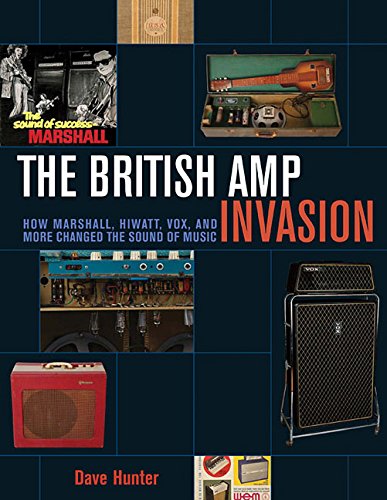 Dave Hunter’s latest book is entitled, The British Amp Invasion: How Marshall, Hiwatt, Vox, and More Changed the Sound of Music, and covers a span of the influence of British amplification from the late 1950s onward. As an industry, the companies behind the amplifiers are a fascinating study, not only from a design and sonic perspective, but also because of the stories themselves that surround their business success and growth (or for some, their bad deals and decline).
Dave Hunter’s latest book is entitled, The British Amp Invasion: How Marshall, Hiwatt, Vox, and More Changed the Sound of Music, and covers a span of the influence of British amplification from the late 1950s onward. As an industry, the companies behind the amplifiers are a fascinating study, not only from a design and sonic perspective, but also because of the stories themselves that surround their business success and growth (or for some, their bad deals and decline).
Read More »
Tag Archives: fender
Finding Your Distortion Tone (Hint: Mids)
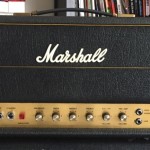 If only things were so easy that we could buy the guitar we felt comfortable with, plug into an amp, maybe add a pedal or two, and then be done. Tone Nirvana. It usually doesn’t happen this way however. The problem is that there are numerous choices for gear and, and even more options for putting together the whole rig, to create an effective system that is optimized. And just how we use the equipment (whether for live use or studio recording) also makes a difference in finding what works for guitarists.
If only things were so easy that we could buy the guitar we felt comfortable with, plug into an amp, maybe add a pedal or two, and then be done. Tone Nirvana. It usually doesn’t happen this way however. The problem is that there are numerous choices for gear and, and even more options for putting together the whole rig, to create an effective system that is optimized. And just how we use the equipment (whether for live use or studio recording) also makes a difference in finding what works for guitarists.
We recently wrote about the challenges with the Internet and its opinions. You can find as many people who will love or hate any particular piece of gear. This can become frustrating when trying to dial in a tone you’re interested in capturing.
Read More »
The Return of Shred Guitars? Part 1: Yngwie Malmsteen Strat
Perhaps the title is a bit misleading. "Shred Guitars" – a.ka. those guitars designed to be used for playing fast runs and scales – never really went away. They just were underground for a bit during the ’90s in particular. In the 1980’s, a hot-rodded "Super Strat" configuration was THE guitar to own for up and coming rock guitarists. If you played hard rock or metal, having a U.S.-built B.C. Rich, Charvel, Kramer, or Jackson was one way to tell the world that you were one "serious" musician – even if your guitar was painted in hot pink or some florescent shade, or came with wild polka dot accents or striping.
Read More »
Vintage Style Pickups Explored: Part 1 – Single Coil Stratocaster Replacements
With so many different types of pickups on the market, choosing one that’s just right for you can certainly be a challenge. For typical non-active pickups used in most guitars today, the materials used and how each pickup is constructed can make a large difference in the final tone achieved. Active pickups (i.e., those that have some form of pre-amplification built in that requires the use of a battery of some type) are a whole different category altogether.
For the sake of focus, this two-part series will discuss varieties of vintage style pickups. First, we’ll take a look at some single-coil options that you’d typically use in a Stratocaster. Next time, we’ll bring out the Les Paul and play with some vintage-voiced humbuckers. As we go through the various options, some vendors were kind enough to provide great educational info about how each pickup is made and why they’ll sound a particular way. This will be helpful for the person that may not necessarily be interested in a vintage-voiced pickup but can use the information to read over the specifications of another pickup and then perhaps get a better understanding of how each specification may affect the tone.
Read More »
Fender Stratocaster Plus Series
The Fender Stratocaster’s design, tone, and roster of famous past and current players clearly make it a legendary guitar. As with any other guitar model however, certain designs invoke a special feeling which deem it to be a classic or at least a legend in the making. The most prized Fender Stratocasters today are those known as pre-CBS (prior to the sale of Fender Musical Instruments to CBS in 1965) models, produced from 1954 through the early 1965. These instruments have a certain unique feel and sound as well as being historically significant since they were produced during some of the most interesting eras of rock and roll itself. As we moved into the 70’s, the Stratocaster became a more popular and more widely produced guitar, but also one that was constructed with less attention to detail. As a result of poorer quality control and materials used, the 70’s were seen as the low point of the Stratocaster.
Read More »
The Fender Custom Shop Experience
Jimi Hendrix. David Gilmour. I grew up admiring both of these artists…and their Stratocasters. Hendrix is most famously known for his late ’60s white “Woodstock” Strat, while Gilmour is best known for his black Strat (now a signature Fender model) which is a “mutt” of various parts – but started out as a circa 1968 stock model.
These late ’60s Strats are most easily identified by use of the large headstock design that originated after the CBS purchase of Fender musical instruments in 1965. Hendrix can be seen with his favorite Strat (he preferred his black one over the white he used at Woodstock) in his famous performance captured on video at The Isle of Wight in 1970. Gilmour used an identical black with maple board model in the Pink Floyd “Live at Pomeii” film shot in 1972. These classic performances, and those Stratocasters, left an impression on me that continues to this day.
Read More »
Fender 59 Bassman LTD
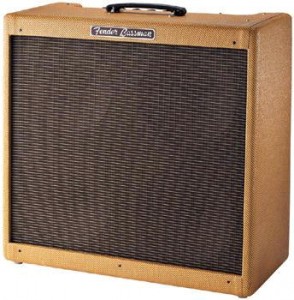 The Fender Bassman evolved as an amplifier designed to initially go along with the Fender Precision Bass. It’s perhaps a bit of an irony that this amp design is among the most revered from guitarists – not bass players. Add to this the fact that the first Marshall amplifiers were largely leveraged from the Bassman’s circuit design (which in turn spawned a countless array of further clones as time passed), and it’s easy to understand why the Fender Bassman was the first amplifier chosen as a tweed reissue in the early ‘90s.
The Fender Bassman evolved as an amplifier designed to initially go along with the Fender Precision Bass. It’s perhaps a bit of an irony that this amp design is among the most revered from guitarists – not bass players. Add to this the fact that the first Marshall amplifiers were largely leveraged from the Bassman’s circuit design (which in turn spawned a countless array of further clones as time passed), and it’s easy to understand why the Fender Bassman was the first amplifier chosen as a tweed reissue in the early ‘90s.
Weber Speaker Upgrade for Fender Deluxe Reverb Reissue
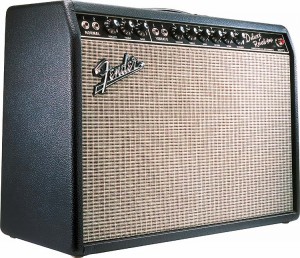 We’ve often discussed at LegendaryTones the fact that your tone can often only be as strong as its weakest link. With amplifiers themselves, often the weakest link turns out to be the speaker used. When thinking about the individual cost of the speakers and comparing that with the other individual components that make up an amplifier, speakers turn out to be one of, if not the most, expensive pieces used. So what does this often translate to for manufacturers looking to cut costs? You guessed it – throw in cheaper speakers.
We’ve often discussed at LegendaryTones the fact that your tone can often only be as strong as its weakest link. With amplifiers themselves, often the weakest link turns out to be the speaker used. When thinking about the individual cost of the speakers and comparing that with the other individual components that make up an amplifier, speakers turn out to be one of, if not the most, expensive pieces used. So what does this often translate to for manufacturers looking to cut costs? You guessed it – throw in cheaper speakers.
Read More »
2000 Fender American Standard Strat
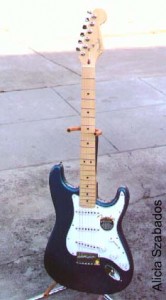 Year 2000 marks the end of the American Standard Stratocaster line and the introduction of Fender’s new American Series Stratocaster. Many marked refinements were incorporated in the new American Series Stratocasters that we’ll examine in the future. However, because the American Standard Stratocaster has been discontinued, it means that there are potentially great deals to be found in the marketplace. For that reason, as well as to mark the end of the American Standard Stratocaster’s 13-year life, LegendaryTones.com decided to examine some of the history of the American Standard Stratocaster as well as look at the year 2000 model in depth.
Year 2000 marks the end of the American Standard Stratocaster line and the introduction of Fender’s new American Series Stratocaster. Many marked refinements were incorporated in the new American Series Stratocasters that we’ll examine in the future. However, because the American Standard Stratocaster has been discontinued, it means that there are potentially great deals to be found in the marketplace. For that reason, as well as to mark the end of the American Standard Stratocaster’s 13-year life, LegendaryTones.com decided to examine some of the history of the American Standard Stratocaster as well as look at the year 2000 model in depth.
The first of Fender’s famous and long-lived American Standard Stratocasters was introduced in 1987 at the NAMM Convention and was a hit from the start. Fender was now in its post-CBS era, and the company’s new management team was committed to bringing Fender back to its glory days by again producing high-quality affordable instruments. In the 70’s especially, the CBS-owned Fender company suffered from a reputation for producing poorly-made guitars as a result of mass production and poor quality control. Being owned by mega-giant CBS did nothing but encourage the notion that the company only cared about profits. However, with new owners and the new American Standard model introduced, Fender clearly succeeded in time and the company again enjoyed a renewed reputation for producing quality instruments.
Read More »